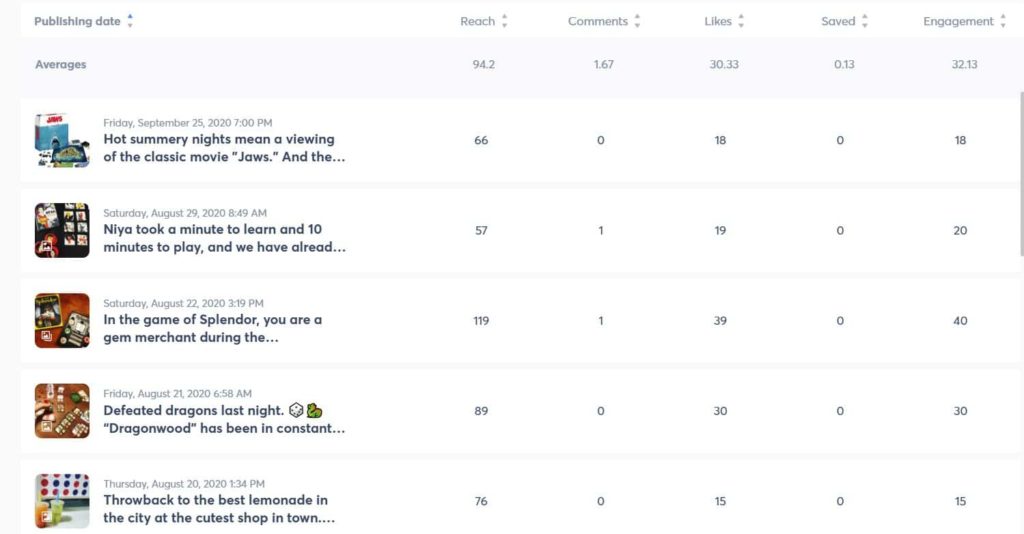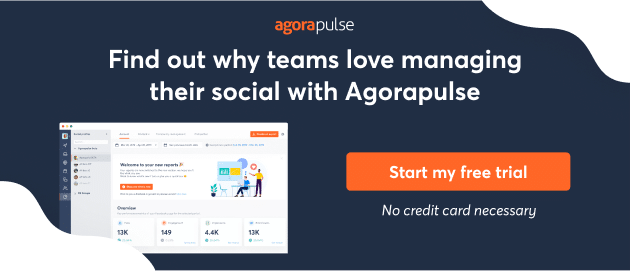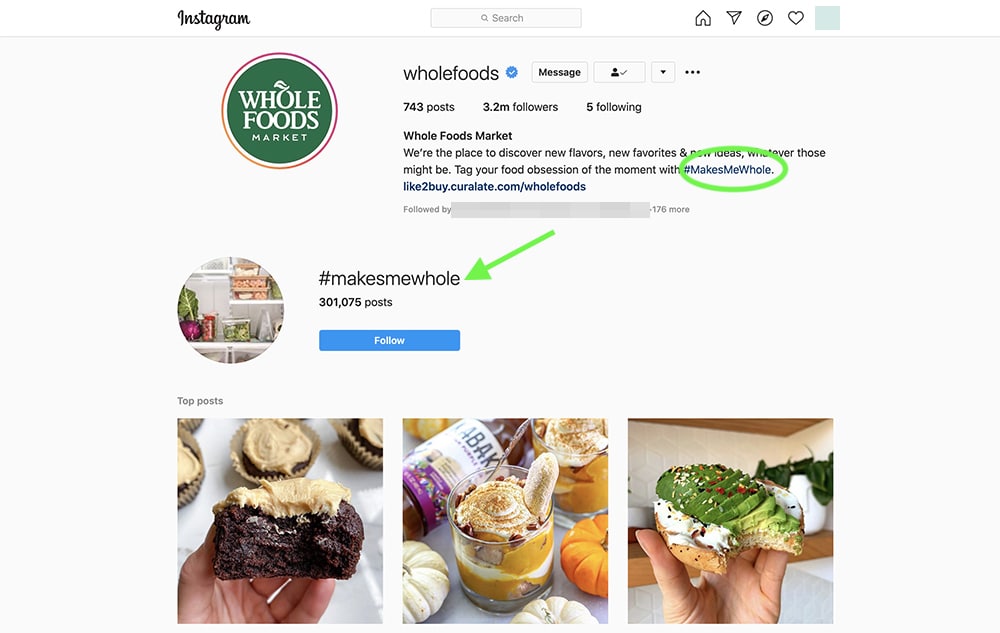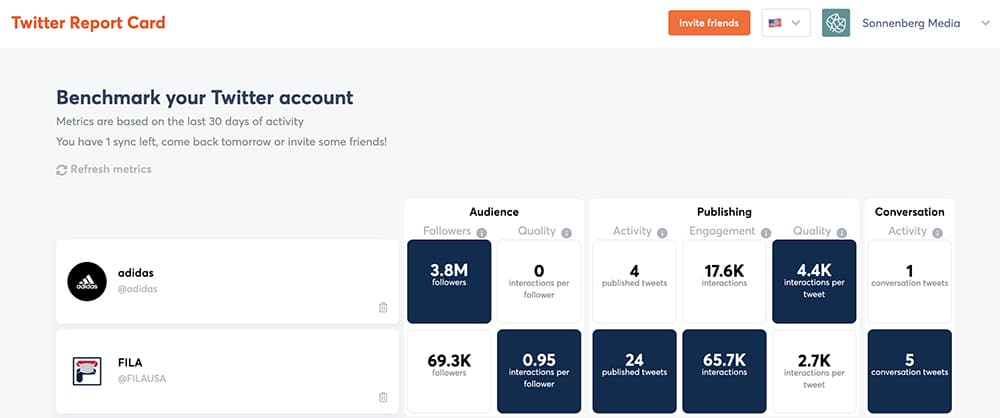Need to get the full picture for a social campaign or strategy? Consider performing a SWOT analysis to identify its strengths, weaknesses, opportunities, and threat.
As a social media manager, every post you publish contributes to a larger goal and fits into an overall strategy. But how do you identify the right goals and shape a strong social media strategy?
With a SWOT analysis, you can get helpful insights into your social media performance and create a smart strategy.
Find out how this approach works then learn how to perform a SWOT analysis strategy for your brand or client.
Table of Contents
What Is a SWOT Analysis?
SWOT stands for Strengths, Weaknesses, Opportunities, and Threats. A SWOT analysis lets you pinpoint what you’re doing well, where you could do better, new possibilities, and potential risks.
You can use this technique for almost any area of your social media agency, especially when you need to evaluate social media performance.
When you take the time to do a SWOT analysis, you can do the following.
Get more from your social media reports
Sure, you compile social media reports at the end of every month. But are you really leveraging the data you collect?
With a SWOT analysis, you can dig deeper into your social data and use it to develop a better strategy for your digital agency
Set effective social media goals
Does your boss want you to improve your brand’s social media performance—but you aren’t sure where to start or how to do it?
A SWOT analysis essentially gives you a roadmap that you can use to set realistic goals.
Improve your overall marketing strategy
A social media SWOT analysis focuses on one aspect of your marketing efforts. Yet the insights often apply to other areas. You can use what you learn to enhance interconnected areas of your digital strategy.
How to Do a Social Media SWOT Analysis
To do a SWOT analysis, access your social profiles and their analytics. You can use the native apps or log in to your social media dashboard tool for efficiency.
Then follow these four steps:
1. Know your strengths
First, identify what you’re doing well.
Ask yourself questions like:
- How do you make your branding clear on social media?
- Do you consistently write social copy in your brand voice?
- Do your graphics reflect your brand colors?
- What makes your creatives stand out? Do they give your brand a distinctive look or aesthetic?
- How do your followers tend to engage with your content? Do they hit the like button, drop emojis, or leave thoughtful comments?
- Which of your posts has had the greatest reach or engagement in the past few months? What made them stand out—the copy, the creatives, or both?
2. Find your weaknesses
Once you’ve given yourself a well-deserved pat on the back for all your strengths, it’s time to identify areas where your social performance is lacking.
Use your analytics to answer questions like:
- Where does your audience spend their time: Facebook, Instagram, Twitter, LinkedIn, or another platform? Are you neglecting any important platforms? Or are you wasting time on platforms that don’t matter as much?
- Where does your brand get the worst results? Do your impressions and engagement stay low on some platforms, no matter what you do?
- Are you posting consistently enough? Has your publishing schedule been erratic? Can your followers expect to hear from your brand regularly?
- Have you received negative feedback on any platforms? What fueled those responses?
- Are your competitors outperforming your brand on any platforms? Why are they getting better results?
3. Identify your opportunities
Next, look for some areas where your social media agency could fill a need or explore uncharted territory.
Here are some ideas to inspire your team:
- Do your DMs or comments frequently include requests for certain promotions or content? If your audience raves about your Facebook Live sessions, consider making them a regular part of your schedule. If your followers constantly ask for coupon codes, think about offering some in your next lead gen campaign.
- Have any new social media platforms or features launched recently? If your competitors haven’t yet started using new tools like Instagram Reels, your brand could stand out as the first in its niche.
- Are you relying solely on organic social media? If you haven’t used social advertising, consider testing out a campaign. With the right mix of paid and organic social media, you might improve your performance more easily.
FREE DOWNLOAD: Guide to a SWOT Strategy for Social Media
4. List your threats
Finally, take a few minutes to identify factors that could negatively impact your social performance.
Most threats won’t be imminent.
Yet you should still be aware of them so you can be prepared to respond effectively. Threats include …
- Trolls, angry customers, and negative followers who leave bad comments
- Competitors who are new to your niche and appear to be growing quickly
- Updates to social media algorithms that may impact your brand’s visibility
How to Leverage a SWOT Analysis Strategy
Once you’ve finished these four steps, you can turn your analysis into a SWOT strategy.
Here are four ways to develop a plan of action for your social media strategy.
1. Amplify your strengths
You can get even more out of your strengths by making them a consistent part of your social media schedule. Consider how you can turn your best-performing posts into a regular feature.
For example, your top posts might include user-generated content (UGC). Yet you might not have enough UGC to publish regularly.
To collect more, you can give fans the chance to be featured on your page each time they post UGC with your branded hashtag. To add an extra incentive, offer a randomized giveaway for the UGC participants each week or month.
2. Learn from your weaknesses
Identifying your weaknesses is only half the battle.
After you find areas that need improvement, make a plan to do better.
For example, your team might struggle to post regularly or drive engagement consistently.
First, use native insights or a third-party social media tool to find when your audience is most active. Decide when and how often to post, and create a content calendar based on this schedule.
Then use a social media tool to schedule your posts, so you don’t have to publish in real-time.
3. Test your opportunities
When your team has extra time or budget flexibility, pursue some of the opportunities you identified. When you find something that works, make it a regular part of your strategy.
For example, you may have determined that social ads could give your new product launch a boost.
Run a test campaign and review the results. Did the campaign generate helpful engagement or offer a good return on investment (ROI)? Think about using ads for all future launches or test out other ad objectives to uncover more opportunities.
4. Manage potential risks
Even if your threats seem minimal, it’s important to manage risks effectively. If you start to monitor the issue now, you can track its progress and get ready to respond if it becomes more substantial.
For example, you may have identified a few competitors who are gaining traction quickly.
Monitoring your competitors manually can be time-consuming, but tools can help you track their performance automatically. You can log in to Twitter Report Card to see how your brand compares to any competitor you choose.
Ready to put your new knowledge to work?
Download our complete guide to SWOT for social media strategy and start optimizing your brand or client’s social performance.
* * *
Get started on saving time and energy on your own social media management! Check out our free trial of Agorapulse to help you schedule, track, and measure all your social media efforts.












